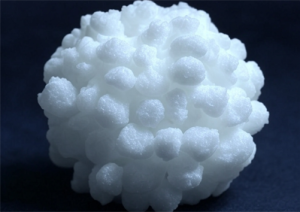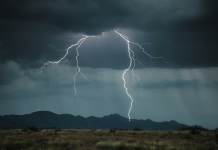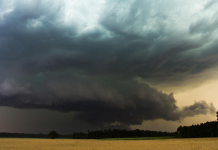Graupel /grou′pəl/, also known as “soft hail” or “snow pellets,” is a unique type of precipitation that forms when super-cooled water droplets freeze onto falling snowflakes.
This process, called riming, creates small, round or conical balls of rime ice, typically measuring between 2 and 5 mm in diameter.
Graupel is distinct from hail, which is larger and harder, and from sleet, which is clear ice pellets.
Graupel forms in clouds when snowflakes encounter super-cooled water droplets.
These droplets freeze onto the snowflakes, creating a layer of rime ice that can completely cover the original crystal, resulting in a ball-like shape.
This process often occurs in winter storms or at higher elevations.
Graupel resembles small Styrofoam balls and is white or cloudy in color, unlike the clear appearance of sleet.
It is fragile and will disintegrate easily if handled, unlike hail which is hard.
The METAR code for graupel is GS.
Graupel can pose an avalanche risk because it does not bond well with other snow layers, acting like ball bearings in the snowpack.
It tends to roll off steep slopes and accumulate on gentler terrain, increasing the risk of avalanches.
 Under a microscope, graupel particles exhibit a unique structure formed by the accumulation of frozen super-cooled water droplets on snow crystals.
Under a microscope, graupel particles exhibit a unique structure formed by the accumulation of frozen super-cooled water droplets on snow crystals.
The riming process obscures the original shape of the snowflake, transforming it into a rounded, ball-like form.
Observations using low-temperature scanning electron microscopes (LT-SEM) reveal frozen cloud droplets up to 50 μm in diameter on the surface of graupel particles.
The rime ice appears frosty and milky white, with a granular texture resembling miniature beads or snowballs.
This structure is difficult to capture with traditional light microscopes due to limitations in resolution and depth of field.






